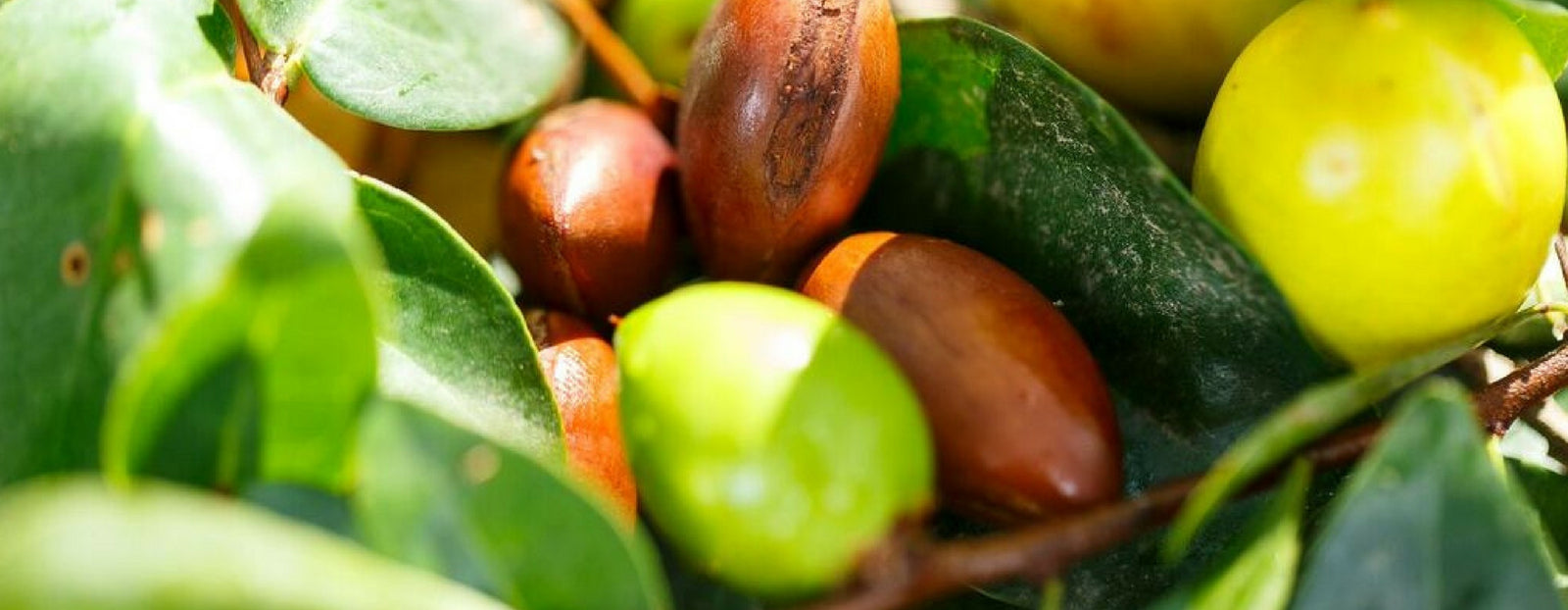
by Tal Carmel January 14, 2018

This month, at the start of the Argan season and in partnership with the High Atlas Foundation, FRÉ, together with local women’s cooperatives, will plant 2,000 trees of life in in Tidzi, a Moroccan village located 25 kms from the city of Essaouira. Thank you for being a part of the FRÉ journey and for making this possible!
January in Marrakech, Morocco, the weather is fairly mild, with roughly 11 hours of sunshine a day, and the average temperature will be around 13 degrees celsius, and over the course of five days there will be approximately 30mm of rainfall. Why is this important? Because it’s what makes Morocco the ideal location for the Argania Spinosa tree to flourish, otherwise known as the Argan Tree, or Tree of Life in the Amazigh language. In the cooler weather, the tree can make new roots without having to feed the leaves. Water requirements are much lower without the leaves on the tree, and for a tree like the Argan, where its roots are vital, beyond itself, a strong foundation is important.

The Argan tree, which grows moderately in a 20-50 foot circumference of height and width, with its green leaves and yellow-ish flowers, thrives in desert conditions: hot days, cold nights, salty soil, making the foresummer (the time just before summer) the optimal time for growing. This means that January is the best month for planting, and the tree tends to flower in April, with fruit ripening in June. Due to its adaptation to the harsh desert weather, the Argan Tree is able to survive on the desert fringes where few other trees can grow, making them a vitally important bastion against desertification. They have long, questing root systems that go deep into the thin soil in search of the water table. The depth of the root system means the trees are firmly anchored to the ground and resistant to strong winds, which in turn protects the soil from erosion; they are truly trees of life.
Impact On The Community
While Argan trees protect the soil around them and provide us with the amazing and multi-purposed Argan oil that we know and love, their use and importance goes far beyond the ground and cosmetics. According to the International Development Research Centre (IDRC), Argan trees support the livelihoods of 3 million Moroccans, about 10% of the country’s population, who use the husks as firewood, the fruit for animal fodder and the pips to make precious oil. And Argan oil is an important economy for locals — particularly for women, who have grouped together to form more than 150 cooperatives, for harvesting the Argan seeds.

But the impact of planting trees, or urban greening, is one that spans the globe, and is beneficial beyond the borders of Morocco and her trees of life. Urban greening improves pride of place and can even reduce crime and drug abuse. Additionally, research shows that living in a green neighbourhood reduces stress and aids recovery from illness. And sometimes, money does grow on trees! Useful indigenous species and fruit trees can provide produce that can be used in feeding schemes or sold by schools and communities. Indigenous trees and vegetation can increase property values and can provide natural air conditioning for homes and classrooms.
Impact On The Environment
The impact on the community isn’t where the benefits stop either, as trees have a profound impact on the environment as well with up to 90% of land-based animals surviving in close proximity to, or dependent upon, trees in some manner. Trees alter a region by moderating its climate, improving its air quality, conserving water, and encouraging biodiversity, all of which are important for our ecosystems and as such our livelihoods on this planet. After all, trees remove pollution from the atmosphere, improving air quality, and that keeps our pores clean, and if there’s one thing we love at FRÉ, besides our trees, it’s clean pores.
Planting the Seeds of Life
At FRÉ we value our trees, and we love our planet. We are passionate about skincare that works around your busy sweaty life, but we also want to make sure that we give back more than we take, which is why in honor of the trees that gave life to our company, we do our part to give life back to the trees. The Argan tree grows in the arganeraie forest of Morocco, which only covers some 8,280 km2 (3,200 sq mi) and is designated as a UNESCO biosphere reserve. Their area has shrunk by about half during the last 100 years, due to charcoal-making, grazing, and increasingly intensive cultivation As such, with every skincare set you buy, FRÉ will plant an Argan tree, to help replenish the endangered Argan forest and support the women who harvest Argan oil in Morocco. Since January is the best month to plant and the beginning of the Argan season, FRÉ will plant 2,000 trees of life in in Tidzi, a Moroccan village located 25 kms from the city of Essaouira in partnership with the High Atlas Foundation, and together with local women’s cooperatives. Thank you for being a part of this journey!
Comments will be approved before showing up.